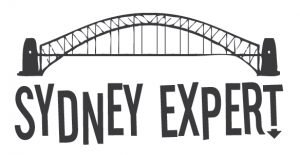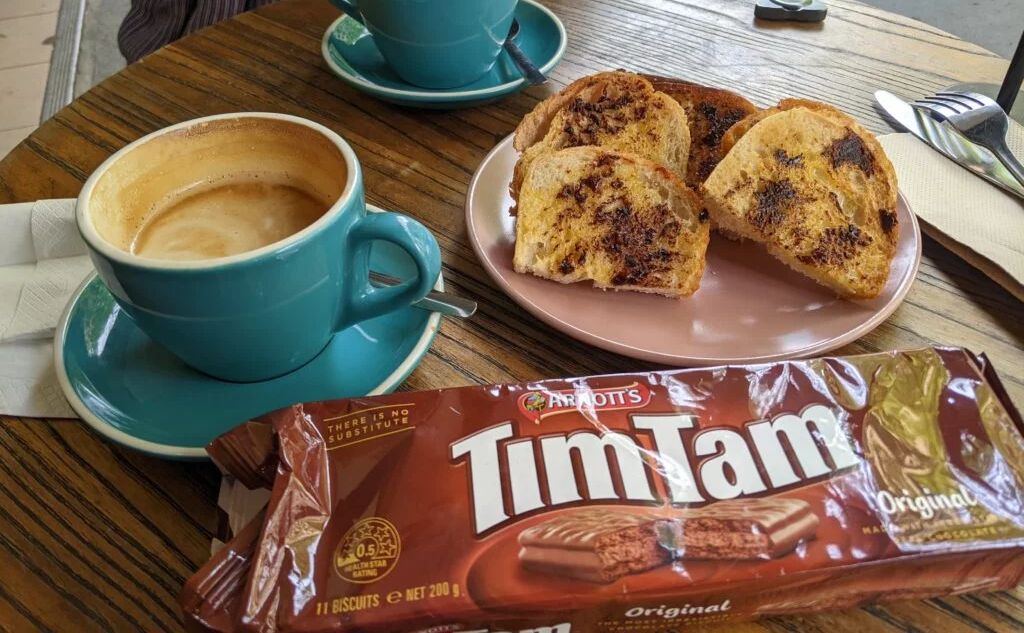Keen to learn more about life in Australia? This Aussie Food & Culture tour from Local Sauce is the perfect introduction. It takes you off the beaten tourist trail and shows you a hidden corner of the city with a chance to try some local favourites along the way. Sydney travel writer Joanne Karcz shares her experience below.
Billed as Local Sydney: Aussie Food, Culture & Coffee, this Local Sauce Tour takes visitors away from the usual tourist spots to discover something different. Meandering through the inner-city suburbs of Pyrmont and Ultimo, the tour ends at a local pub in Glebe.
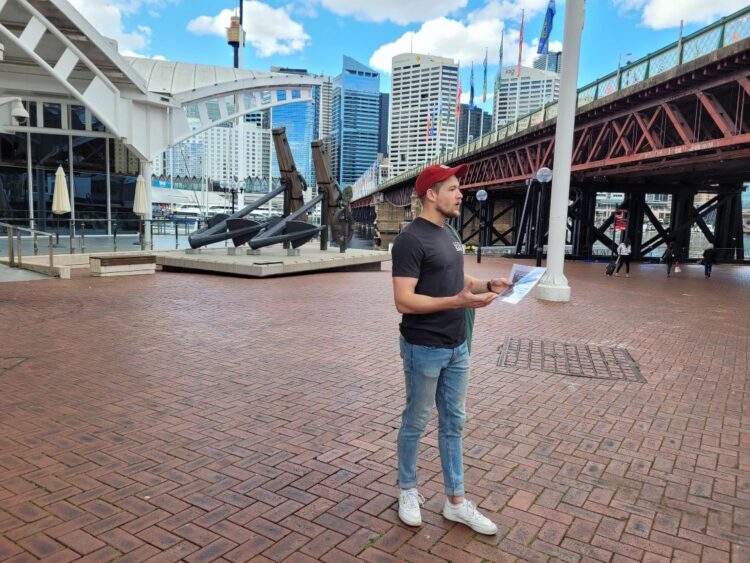
This page contains affiliate links. You can find our full disclosure policy here.
Our meeting place is Pyrmont Bridge which is lined with colourful flags advertising an upcoming dental conference. People are out and about on this warm spring morning. Runners speed past, while tourists pose for photographs with Darling Harbour as the backdrop.
We’re a mixed group. My friend and I are locals looking forward to learning more about our hometown. Sisters from Japan want to discover Sydney’s coffee culture. A couple from Brisbane hope to see a lesser-known side of Sydney and perhaps uncover some family history. A young woman from San Francisco is keen to go off the beaten track.
Andrew, our guide, isn’t fazed. He knows that on this Aussie food and culture tour his guests will get all they hope for, and more.
After a brief introduction, we cross the bridge into Pyrmont. While “Some of the oldest parts of Sydney are tucked away here,” says Andrew, “this side [of Sydney] doesn’t get much love.”
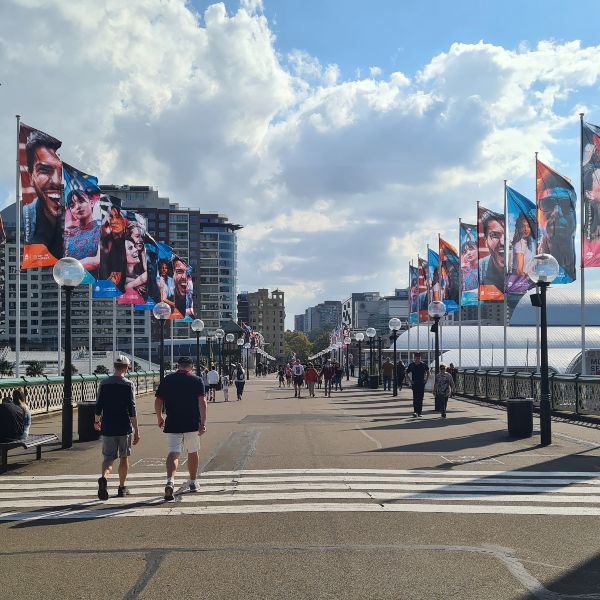
Replacing an earlier wooden bridge, the wood and steel of Pyrmont Bridge has a large swing span. Andrew encourages us to imagine how things looked when the bridge opened in 1902. Then, the main traffic was horse and cart, carrying goods from industrial Pyrmont to the city. Later vehicular traffic replaced the horses. In the 1980s the bridge was closed to traffic and became a pedestrian bridge.
My friend, unlike the rest of us including Andrew, has seen the swing span when it is open. This happens at set times to allow vessels more than 7m high to pass through.
Looking across Darling Harbour to the city, we’re greeted by a sea of glass and concrete. Hidden amongst these skyscrapers, are three Sydney icons that, 100 years ago, were easily seen from this side of Pyrmont Bridge. Andrew shows us a picture from 1907 pointing out the dome of the Queen Victoria Building (QVB), the Town Hall and the spire of St Andrews Church.
Pyrmont was a hive of industry in early colonial times. The “four S’s” as Andrew calls them: Ships, sugar, sandstone and sheep were all important industries.
The ships are still here. Colonial Sugar Refining Company (CSR) headquarters and refinery in Pyrmont have closed. While the three Pyrmont sandstone quarries, called Paradise, Purgatory and Hell Hole by quarrymen, are long gone, we’ll see many buildings built with quarried sandstone along our walk.
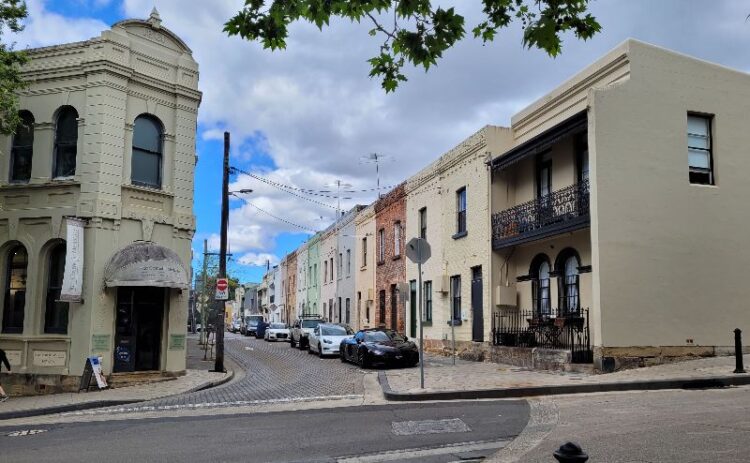
As Andrew explains, wool was an important export leading to the expression: “Australia rode on the sheep’s back.” But things changed. Industry declined and so did Pyrmont’s population. In the 1980s, a push to rejuvenate the area resulted in people returning to the area.
Following the edge of the harbour around the outside of the Australian National Maritime Museum, Andrew stops to point out a replica of the Dutch vessel, Duyfken, which landed on Australia’s coastline 164 years before Captain Cook who was on the HMS Endeavour.
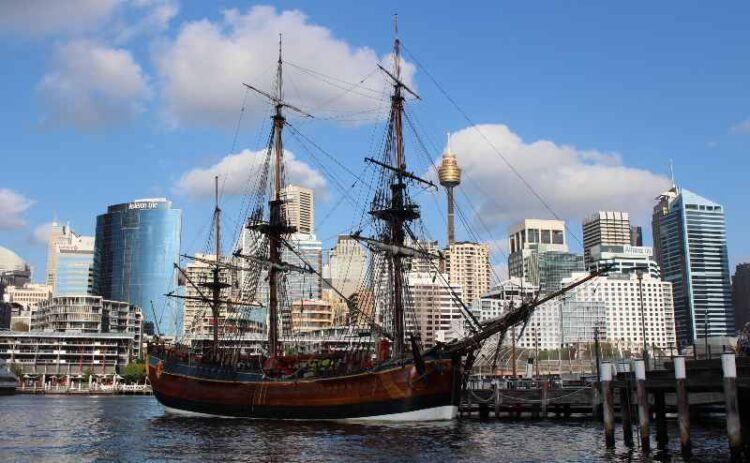
John, who is of Greek heritage, is delighted that our walk takes us past the Welcome Wall. It lists the names of people born overseas who now call Australia home. It won’t be an easy task finding his father’s name as names aren’t in date or alphabetical order. Rather they’re in “order of date of application,” says Andrew. Applicants donate $500 to the Maritime Museum to add a name to the wall.
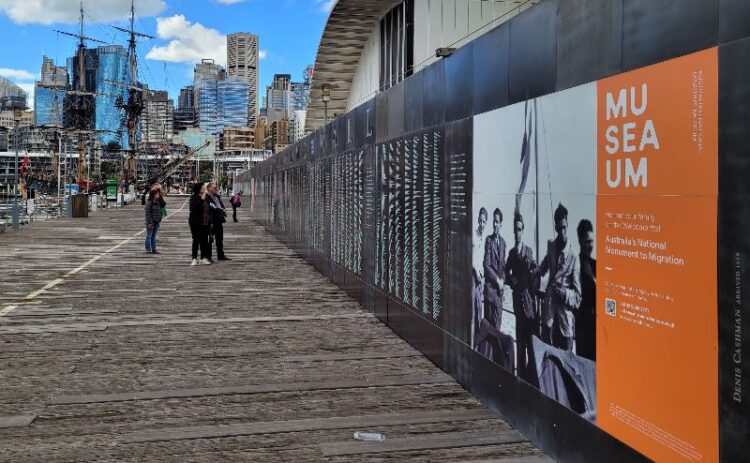
Happily, John finds his father’s name. Mission accomplished.
Using a map of the area, Andrew explains the background to the Indigenous names of places around us. Tumbalong Park, in Darling Harbour is from the Aboriginal word for “place where seafood is found.” Bennelong Point and Barangaroo were named after an Aboriginal man and wife who were important Aboriginal figures in Australia’s history.
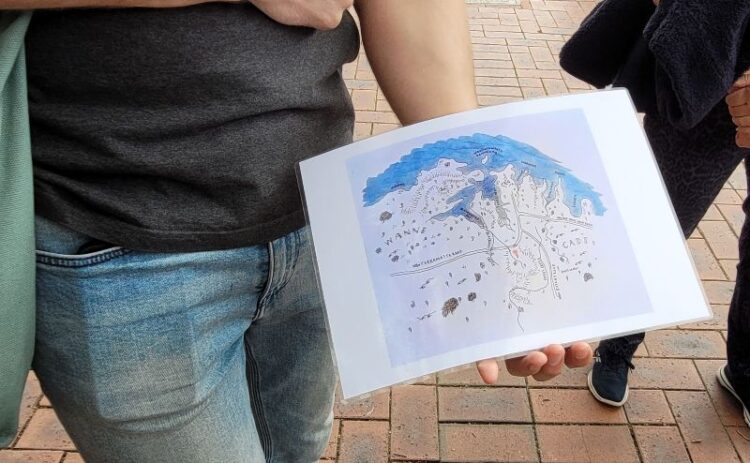
While the White Australia policy of the early 1900s is “not something we’re proud of,” says Andrew, the waves of migration since the policy ended in the 1970s, have resulted in a multicultural society of which he says the “best thing is the food.”
John quips “there’s no such thing as true Australian Food!” To demonstrate the point, our first taste on this Aussie food and culture tour is at Ikhwan Café. They specialize in authentic Malaysian cuisine. The teh tarik, a rich and very sweet Malaysian pulled tea, made from condensed and evaporated milk, gives us an energy boost for the next part of the tour.
Union Square buzzes with locals sitting at outdoor tables with their coffee and avo on toast. Quite a different scene from what we would have seen over 100 years ago. Then, nearby pubs served as community hubs.
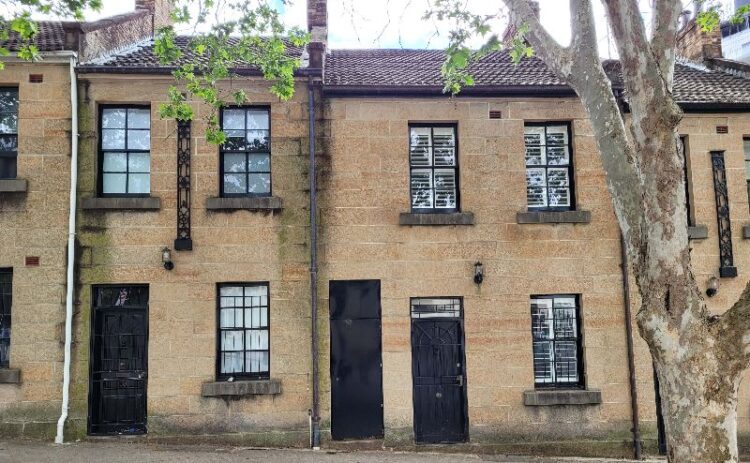
We focus on the two-storey sandstone ‘Union Terrace’, built in 1851, which would have been home to someone with some financial standing. The uniform sandstone blocks are neat with a ‘sparrow peck’ pattern. Next to it is a more modest single-storey ‘cottage’ whose sandstone has been roughly hewn.
Further down the road, we stop for coffee and more tastes of Aussie food. Andrew demonstrates the Tim Tam slam. The rest of us follow suite, bending down to use the chocolate coated biscuits as a straw. Although I’ve lived in Australia for many years, this is my first attempt at the Tim Tam slam. It’s sweet and messy. Probably not something I’ll repeat. As someone comments it’s “not the most graceful [way to eat].”
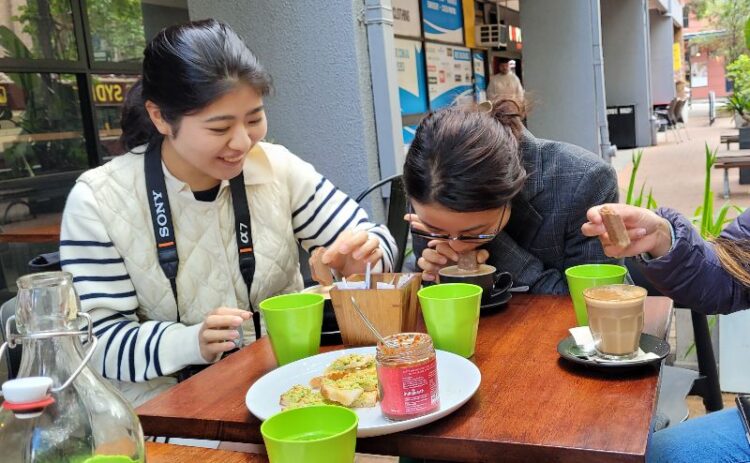
We’re offered quarters of Vegemite toast and avo on toast with a bush tucker dukkah and bush tomato chutney. The Japanese sisters pull a face at the vegemite toast, but when one combines hers with a piece of avo on toast, she gives it a thumbs up.
The warehouse opposite us, now apartments, was once a woolstore. With cotton and synthetics entering the market, the wool industry collapsed. An ‘M’ in the name M Central 1 acknowledges the importance of the Merino Wool Industry.
Continuing our walk, we come to an overhead freeway. It’s rather low, and I duck to avoid banging my head. On my right, I’m delighted to discover an art installation that I’ve only ever seen in photographs. A series of glowing leafless trees appear to hold up the elevated road.
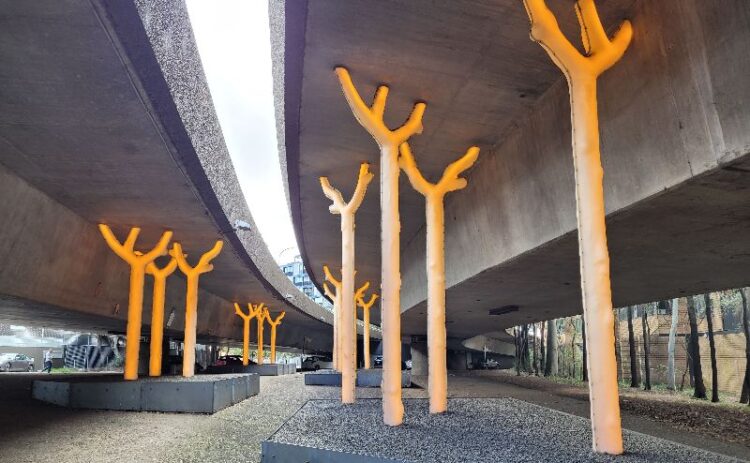
The work, Aspire by Warren Langley, references community action in the area which resulted in the original freeway route being changed.
A man and woman in camouflage clothing walk past us. He has a pet lizard in his hand. He happily stops to tell us that he raised the reptile from egg and let us stroke it. Normally found in outback Australia, this frilled neck lizard is quite happy with all the attention.
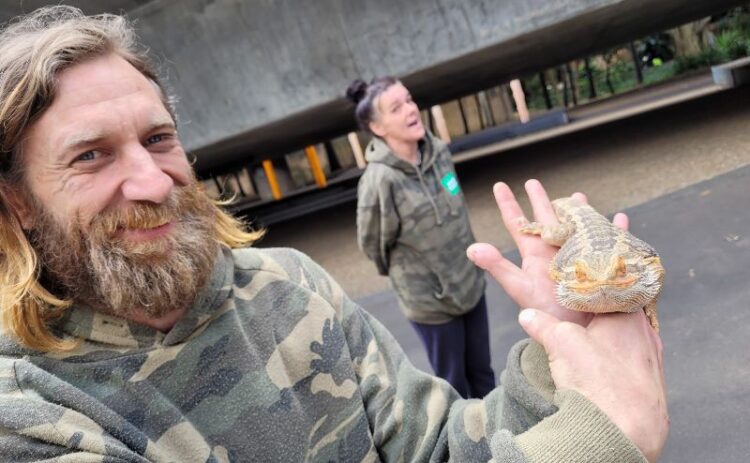
Only a few metres from the noisy freeway, it is suddenly quiet. In this pocket of Ultimo, not far from the busyness of the city, it’s peaceful. We sit down at benches outside Sydney’s narrowest pub, The Lord Wolseley. We’re in for another treat. All of us are oyster fans and the fresh Sydney Rock oysters don’t disappoint.
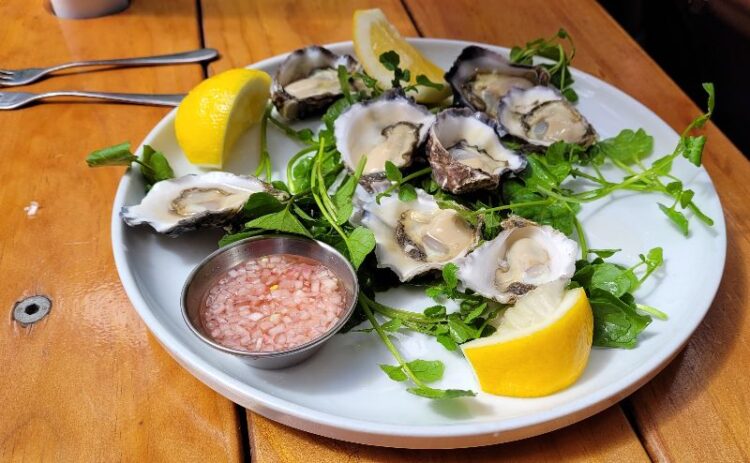
We’ve already passed a number of pubs, named after the workers who gathered there (Quarryman’s and Butchers) or after military figures or events (Dunkirk).
In Glebe, we stop at another. There are three reasons to stop at the Friend in Hand. One is to enjoy a craft beer. Another is to meet George, a Sulphur Crested Cockatoo and the third is for our last taste of Aussie food. Kangaroo, in the form of pepper jerky.
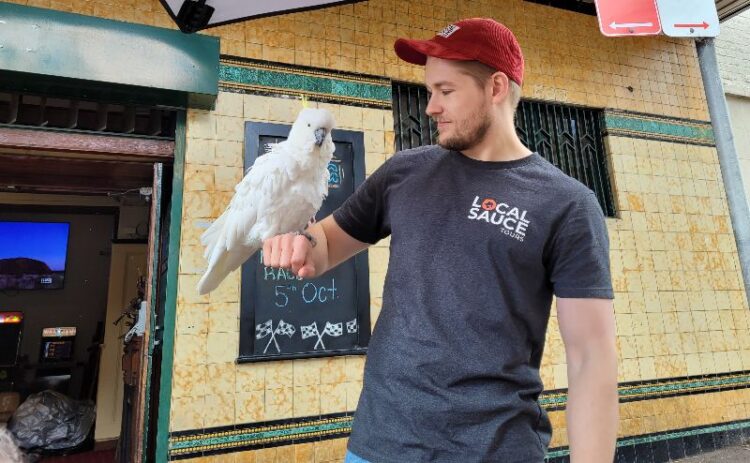
Sipping my beer, I reflect on what I’ve seen, learnt and tasted on today’s Aussie food and culture tour. I’ve certainly discovered things I didn’t know about my hometown. The other guests met their needs too. We went off the beaten track, enjoyed good Australian coffee, tasted Aussie Food, and even discovered some family history. All in all, a morning well spent.
You can book this Local Sauce Aussie food and culture tour directly with the operator here.
The writer was a guest of Local Sauce Tours. Images supplied by the author
Have questions about things to see and do in Sydney?
Head over and join our Facebook Group and we will be happy to help.
